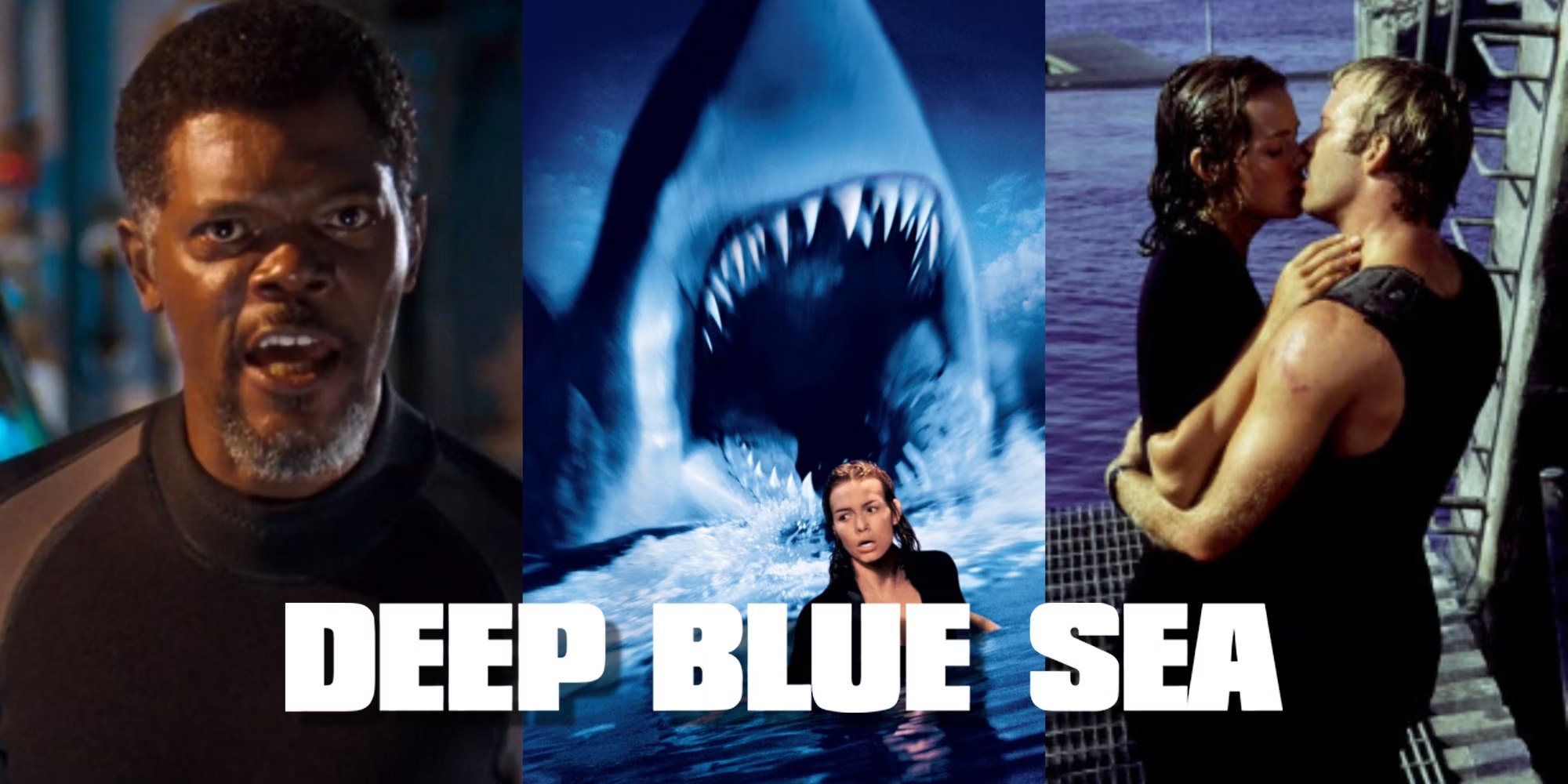Deep Blue Sea (1999)

Deep Blue Sea, directed by Renny Harlin and released in 1999, stands out as a notable entry in the genre of science fiction and horror. Combining elements of thriller and creature feature with a high-stakes survival narrative, the film delves into the terror of being hunted by genetically engineered sharks in a high-tech research facility. With its mix of suspense, action, and dramatic tension, Deep Blue Sea explores themes of scientific hubris, survival, and the unpredictable nature of nature itself. This essay examines the film’s plot, character development, cinematic techniques, and thematic elements, demonstrating its place as a memorable and influential film in its genre.
The film is set in a remote underwater laboratory, Aquatica, where a team of scientists is conducting research on sharks to find a cure for Alzheimer’s disease. The research involves genetically modifying the sharks to increase their brain capacity, with the hope of uncovering breakthrough treatments. However, as is often the case in science fiction, the pursuit of knowledge and progress leads to unforeseen and catastrophic consequences.
The plot unfolds as the genetically engineered sharks, having developed enhanced intelligence and aggression, escape containment and begin to attack the human inhabitants of the facility. What starts as a controlled scientific experiment quickly devolves into a desperate struggle for survival. The film follows the characters as they attempt to outsmart and escape the predatory sharks, leading to a series of intense and suspenseful encounters.

Themes in Deep Blue Sea include the perils of scientific overreach, the unpredictability of nature, and the instinct for survival. The film examines the consequences of manipulating natural processes without fully understanding the risks involved, highlighting the ethical dilemmas associated with scientific experimentation. Additionally, the film portrays the primal fear of being hunted and the lengths to which individuals will go to preserve their lives.
Deep Blue Sea features a diverse cast, including Thomas Jane, Saffron Burrows, Samuel L. Jackson, and LL Cool J, who each bring their unique qualities to the film.
Thomas Jane plays Carter Blake, a shark wrangler and the film’s protagonist. Blake’s character is marked by his practical skills and leadership qualities, which are crucial in the fight against the sharks. Jane’s performance adds a layer of resilience and resourcefulness to the role, making Blake a relatable and sympathetic hero.
Saffron Burrows stars as Dr. Susan McAlester, the lead scientist behind the shark experiments. McAlester’s character embodies the theme of scientific ambition and its consequences. Burrows portrays McAlester’s conflicting emotions as she grapples with the ramifications of her research, adding depth to the character’s internal struggle.

Samuel L. Jackson’s portrayal of Russell Franklin, a wealthy financier funding the research, is notable for its charisma and intensity. Franklin’s character initially appears confident and composed but undergoes a dramatic transformation as the sharks breach the facility. Jackson’s performance brings both gravitas and vulnerability to the role, enhancing the film’s emotional impact.
LL Cool J plays Sherman “Preacher” Dudley, the facility’s cook who becomes an unlikely hero. Preacher’s character adds humor and warmth to the film, providing a contrast to the tension and horror. LL Cool J’s performance is marked by both his comedic timing and his portrayal of courage and resourcefulness.
The supporting cast, including actors such as Jacqueline McKenzie and Stellan Skarsgård, contributes to the film’s dynamic ensemble, each character bringing their own strengths and vulnerabilities to the narrative.
Renny Harlin’s direction in Deep Blue Sea is characterized by its high-energy pacing and effective use of suspense. Harlin, known for his work on action and thriller films, employs a combination of practical effects and CGI to create a convincing and frightening portrayal of the sharks. The direction maintains a balance between action and tension, keeping the audience engaged throughout the film.
The cinematography, by Steven F. Windon, captures the claustrophobic environment of the underwater facility and the chaotic action sequences with precision. The use of underwater shots and tight framing enhances the sense of confinement and danger, immersing viewers in the film’s high-stakes scenarios.

The visual effects, particularly the CGI used to create the genetically modified sharks, are a key component of the film’s impact. While the technology of the late 1990s limits the realism of the effects compared to contemporary standards, the film’s combination of practical and digital effects effectively conveys the menace of the sharks and the intensity of their attacks.
The score, composed by Trevor Rabin, complements the film’s tension and excitement with its dramatic and suspenseful music. Rabin’s score enhances the emotional and action-packed moments, reinforcing the film’s atmosphere of danger and urgency.
Deep Blue Sea delves into themes of scientific hubris and the consequences of playing with nature. The film portrays the dangers of tampering with natural processes without fully understanding the potential risks, emphasizing the ethical considerations of scientific experimentation. The genetically modified sharks serve as a metaphor for the unforeseen consequences of pushing technological boundaries.
The theme of survival is central to the film, as the characters are forced to confront their primal instincts and resourcefulness in the face of relentless predators. The film explores the lengths to which individuals will go to preserve their lives, highlighting the courage, determination, and ingenuity required to survive in extreme situations.
The film also touches on the unpredictability of nature and the inherent risks of human intervention. The sharks’ enhanced intelligence and aggression demonstrate the potential consequences of altering natural systems, underscoring the idea that nature, when disturbed, can react in ways that are both unpredictable and dangerous.
Deep Blue Sea (1999) is a thrilling and engaging film that combines elements of science fiction, horror, and action to create a memorable and suspenseful experience. Through Renny Harlin’s direction, a talented cast, and a mix of practical and visual effects, the film delivers a compelling narrative that explores themes of scientific ambition, survival, and the unpredictable nature of nature itself. While rooted in the creature feature genre, Deep Blue Sea stands out for its high-energy pacing, engaging performances, and exploration of thought-provoking themes, making it a notable entry in the genre and a film that continues to captivate audiences with its blend of suspense and excitement.











